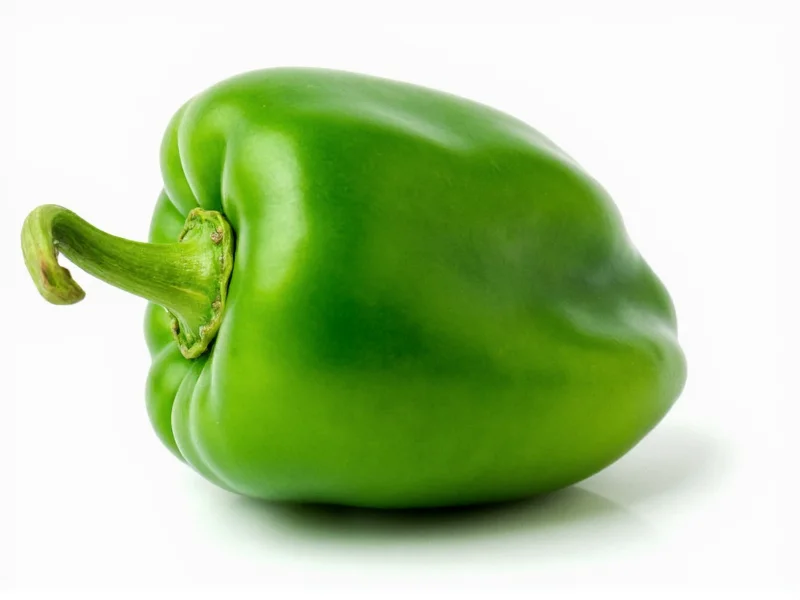Serrano peppers (Capsicum annuum) serve as a staple in Mexican cuisine and offer distinctive visual characteristics that set them apart from other chili varieties. Understanding their appearance helps home cooks, gardeners, and food enthusiasts correctly identify these peppers whether shopping at markets, growing in gardens, or selecting ingredients for recipes.
Visual Characteristics of Serrano Peppers
When examining serrano peppers, several key visual features provide reliable identification markers. These peppers typically measure between 1 and 4 inches in length with a diameter of approximately 0.5 to 1 inch. Their shape appears slender and elongated with a consistent taper from stem to tip, lacking the slight bulging often seen in jalapeños.
The skin texture offers another important identifier. Serrano peppers feature smooth, glossy skin that feels firm to the touch. As the peppers mature or experience environmental stress, characteristic white striations—thin vertical lines—become visible across the surface. These striations indicate increased capsaicin concentration and often correlate with greater heat intensity.
Color Variations Through Maturation
Serrano peppers undergo distinct color changes as they ripen:
- Immature stage: Bright green with possible dark green streaks
- Intermediate stage: Transitional shades of yellow-green or light orange
- Mature stage: Vibrant red, deep orange, or golden yellow
Unlike some chili varieties that develop significant size differences between color stages, serranos maintain relatively consistent dimensions throughout maturation. The fully mature red serrano pepper remains slender and elongated, typically measuring 2-3 inches long with a diameter under 1 inch.
Comparative Analysis: Serrano vs Similar Peppers
Understanding the visual differences between serrano peppers and comparable varieties prevents common identification mistakes. The following comparison highlights key distinguishing features:
| Pepper Type | Size | Shape | Surface Texture | Heat Level (Scoville) |
|---|---|---|---|---|
| Serrano | 1-4 inches long, 0.5-1 inch diameter | Slender, consistent taper, no bulging | Smooth, glossy, with vertical striations when mature | 10,000-23,000 SHU |
| Jalapeño | 2-3.5 inches long, 1-1.5 inches diameter | Thicker walls, often slightly bulbous | Smooth but may develop corking (light streaks) | 2,500-8,000 SHU |
| Habanero | 1-2.5 inches long, lantern-shaped | Broad shoulders, rounded bottom | Wrinkled, dimpled surface | 100,000-350,000 SHU |
| Cayenne | 6-12 inches long, very slender | Elongated, curved taper | Smooth, glossy | 30,000-50,000 SHU |
Practical Identification Tips for Consumers
When selecting serrano peppers at grocery stores or farmers markets, look for specimens with firm, unblemished skin and vibrant color. The best quality serranos feel heavy for their size, indicating proper hydration and freshness. Avoid peppers with soft spots, wrinkles, or signs of shriveling, which suggest age or improper storage.
Gardeners can identify serrano plants by their compact growth habit (typically 24-36 inches tall), dark green foliage, and distinctive white flowers with green anthers. The peppers grow upright on the plant rather than hanging down, which helps distinguish them from some other chili varieties.
Culinary Applications and Heat Considerations
The visual characteristics of serrano peppers directly influence their culinary use. Their thin walls make them ideal for raw applications like salsas and pico de gallo, where they provide intense heat without overwhelming texture. When cooked, serranos maintain their structural integrity better than thinner-walled peppers like Thai chilis but less so than thicker-walled jalapeños.
Chefs often select serranos over jalapeños when seeking more pronounced heat without dramatically altering the visual presentation of dishes. The vibrant colors of mature serranos—particularly the bright red and yellow varieties—add visual appeal to dishes while delivering significant spice.
Growing Conditions and Regional Variations
Serrano peppers originated in the mountainous regions of Mexico's Puebla and Hidalgo states, which influences their appearance. The high-altitude growing conditions contribute to their characteristic thin walls and intense heat. Commercially grown serranos in different regions may show slight variations:
- Mexican-grown specimens often display more pronounced striations
- California-grown varieties tend toward slightly larger size
- Home garden varieties may show greater color variation
Environmental factors significantly impact serrano pepper appearance. Plants grown under water stress or higher temperatures typically produce smaller peppers with more visible striations and increased heat levels—a phenomenon known as "stress-induced pungency."
Storage and Shelf Life Indicators
Understanding how serrano peppers change appearance during storage helps maintain quality. Fresh serranos should remain firm and glossy for 1-2 weeks when refrigerated in perforated plastic bags. As they age, watch for these visual indicators:
- Loss of glossy sheen indicates beginning dehydration
- Development of soft spots suggests spoilage
- Color fading from vibrant to dull indicates reduced freshness
- Increased wrinkling signals significant moisture loss
For longer preservation, serranos can be dried (becoming noticeably darker and shriveled) or pickled (retaining color but developing a translucent appearance).











 浙公网安备
33010002000092号
浙公网安备
33010002000092号 浙B2-20120091-4
浙B2-20120091-4